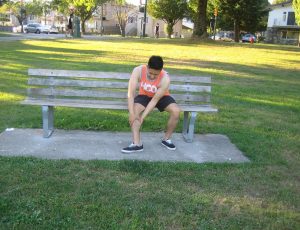Fact Checked
A tailor’s bunion is also known as bunionette which is a deformity characterized by the enlargement of the bone or tissue found around the metatarsophalangeal joint at bottom of the little toe.
Symptoms of tailor’s bunion
- Swelling, pain and redness around the enlargement of the joint
- Changes in the alignment of the metatarsal bone and smaller toe bones can cause protrusion of the joint
- Wearing shoes that rubs against the bunion and result to irritation of the soft tissue under the skin and cause inflammation.
- Sometimes, corns and calluses can develop between the 4th and 5th
- Changes in the gait or way of walking that causes pain in the knees, leg, hips and back.
Causes

- Inherited faulty structure of the foot
- Wearing tight and improperly fitting shoes
- Injuries on the foot
- Rheumatoid arthritis
- Foot deformities such as flat foot
Treatment
- Wear shoes with large toe boxes. Avoid shoes with pointed toes and high heels and apply padding to the affected area to lessen the pain. A shoe pad realigns the toe back to its proper direction.
- The doctor might suggest corticosteroid injections to lessen the inflammation of the tissues around the joint.
- Tape the foot and toe to align them to their normal position for at least a couple of weeks.
- Apply a splint at night when sleeping for structural support and lessen the discomfort. Apply a tape or metal splint around the affected toe to lessen the pain and realign the joint. Wear a rigid splint at night to prevent unnecessary flexing and weight bearing as well as silicone or felt pads for the shoes during daytime to relieve the pain.
- Take the prescribed non-steroidal anti-inflammatory drug (NSAID) such as ibuprofen to lessen the pain and the inflammation.
- Apply a cold compress on the affected area for at least 10-15 minutes every hour to lessen the inflammation and the pain.
- While applying an ice pack on the toe, elevate the foot with some pillows or on a stool to lessen the swelling of the area.
- In a bathtub filled with warm water, add a cup of Epsom salt and mix well until salt is totally dissolved and soak the entire foot on the solution for at least 20 minutes every day. The hot water improves the blood circulation in the area.
